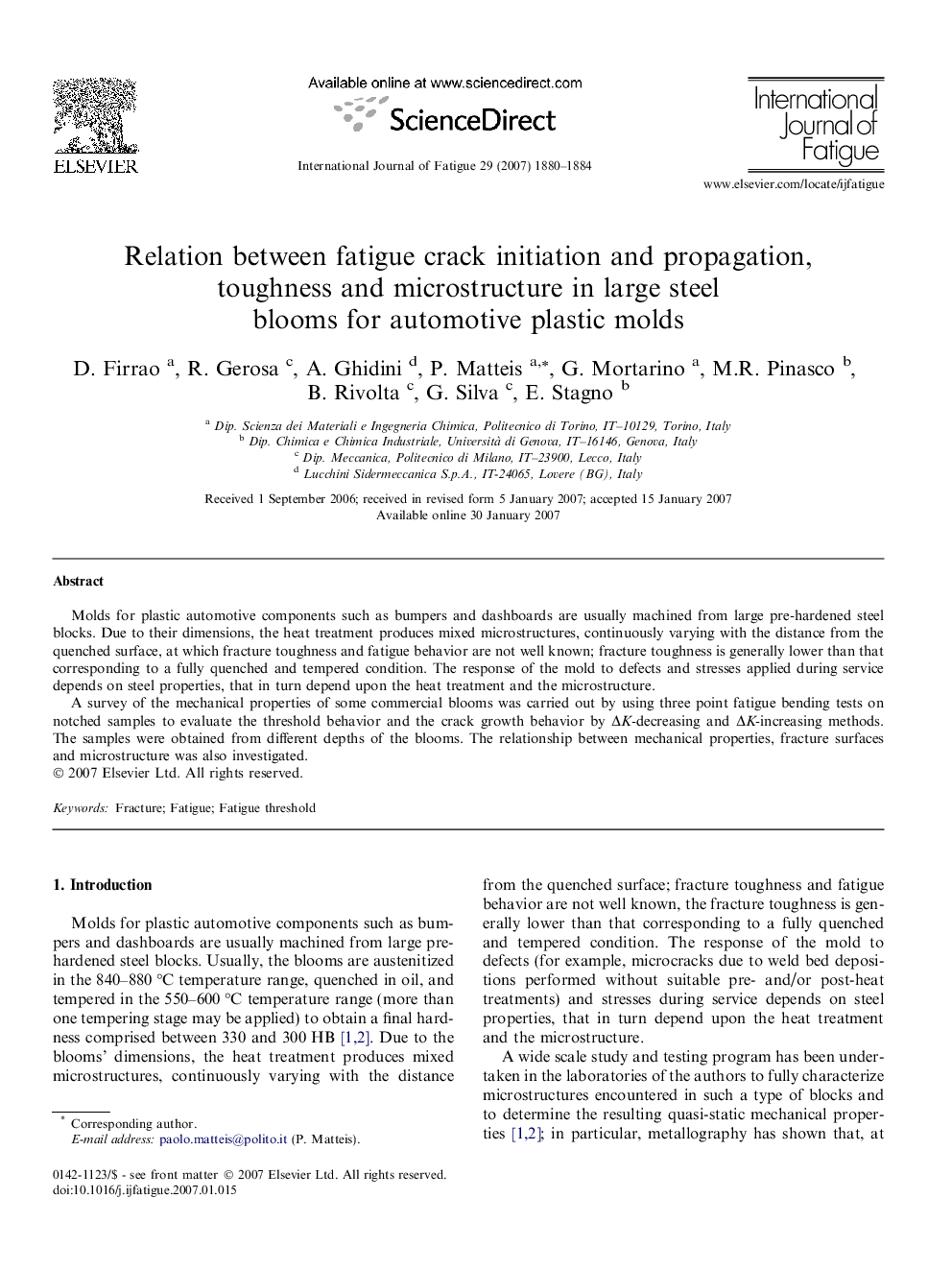| Article ID | Journal | Published Year | Pages | File Type |
|---|---|---|---|---|
| 777243 | International Journal of Fatigue | 2007 | 5 Pages |
Molds for plastic automotive components such as bumpers and dashboards are usually machined from large pre-hardened steel blocks. Due to their dimensions, the heat treatment produces mixed microstructures, continuously varying with the distance from the quenched surface, at which fracture toughness and fatigue behavior are not well known; fracture toughness is generally lower than that corresponding to a fully quenched and tempered condition. The response of the mold to defects and stresses applied during service depends on steel properties, that in turn depend upon the heat treatment and the microstructure.A survey of the mechanical properties of some commercial blooms was carried out by using three point fatigue bending tests on notched samples to evaluate the threshold behavior and the crack growth behavior by ΔK-decreasing and ΔK-increasing methods. The samples were obtained from different depths of the blooms. The relationship between mechanical properties, fracture surfaces and microstructure was also investigated.
